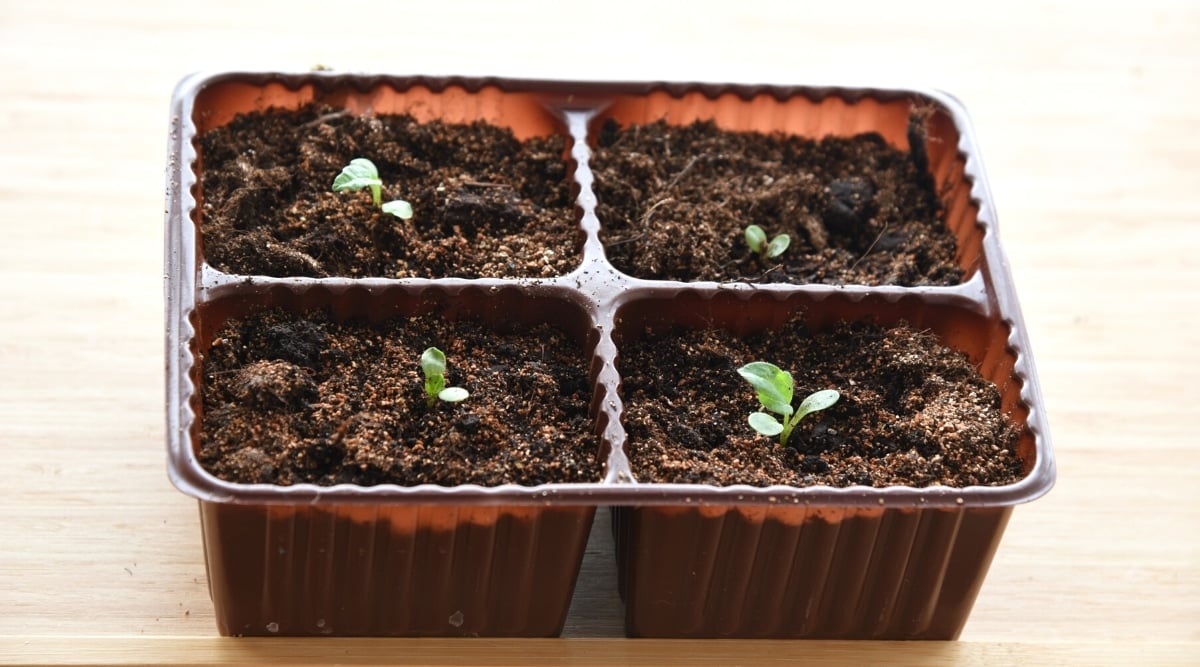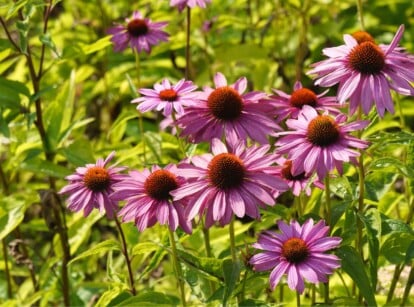When Should You Plant Coneflower Seeds This Season?
Are you thinking of planting coneflowers by seed in your garden? These popular perennials will come back each season if properly planted and cared for. In this article, gardening expert Jill Drago shares the best time to start planting coneflower seeds in your flowerbeds this season!

Contents
Coneflowers are beautiful flowering native perennials. These perennials also lend themselves to easy propagation from seed. These native plants are tough and resilient to our seasons which makes them a great choice for anyone’s garden. Coneflowers really are a plant that you can’t really have too many of in your garden.
These popular native wildflowers come in a wide variety of sizes and colors. They love to be planted in the full sun in well-draining soil. The brightly colored petals surround prominent cones which house the amazing little seeds that will help you grow many more coneflower plants.
If you love coneflowers and want to grow your own, read along and follow these easy tips to get you started!
The Short Answer
The best time to sow your coneflower seeds is in the late winter to early spring. You will want to keep your last frost date in mind. If you plan to sow your coneflower seeds indoors you can do so about 8 weeks before your last frost date. If you plan to sow them outdoors you just need to wait for the soil to warm up to about 65 degrees.
Seed Collection

If you already have coneflowers growing in your garden you have the awesome ability to collect your own seeds.
This process is pretty simple, and it all begins with deadheading your spent flowers. Snip the spent flowers off of the plant, leaving an inch or two of stem below the seed head.
Place these seed heads into a brown paper bag to allow them time to dry out, and for the seeds to release from the plant.
Placing them into a bag will make it easy for you to collect the seeds. You could also opt to just leave the seed heads out on a tray to dry and collect the seeds that way, whichever works best for you!
If you plan on planting seeds that you have collected yourself you will need to cold stratify them. This is a process that will basically emulate the cold period that most perennials need to allow the plant to go into dormancy.
If you live in an area that gets cold winters you can leave the seeds outside in a bag, or maybe even in your shed and the seeds will get enough exposure to the cold. Or, you could collect your seeds and put them into an airtight plastic bag with some sand and keep them in your refrigerator for at least a month.
Purchasing Seeds

If collecting and harvesting your own coneflower seeds isn’t for you, do not worry! Purchasing coneflower seeds is easy and they are readily available online as well as at your local garden centers.
These seeds have been cold stratified already and you should follow the package instructions for indoor or outdoor sewing.
You can find packets of straight varieties as well as a blend of varieties which can give you a wildflower garden look, or just be a complete garden in one tiny little package. Do some shopping around before you purchase to make sure you are getting exactly what you want.
Sowing Seeds Indoors

Before you begin to sow your seeds, check your average last frost date. You will want to sow your seeds 8-10 weeks before that date. This date will differ depending on where you live.
The easiest way to start seeds is by getting a seed starting kit. If this is not available to you, you can use a tray with small cell sections, some small pots or you could even use some yogurt cups with a few small holes poked in the bottom.
Fill your containers up with some seed starting mix and cover the coneflower seeds with about ¼ inch of the same seed starting mix. Keep the soil moist, but not too wet, until the seedlings emerge. The seedlings should begin to sprout within 10-20 days.
When you have seedlings you will want to move your tray to a sunny windowsill. Once the seedlings have a few sets of leaves you can begin to fertilize them if you wish, be sure to only use a half strength dose of a houseplant fertilizer.
If you planted your seeds in smaller cells, keep an eye on the roots. You may need to transplant them into larger pots to help encourage healthy root growth before you plant them in the ground.
Sowing Seeds Outdoors

Once your seeds have gone through their chilling period in the fridge you can plant your seeds directly in the ground once the ground has thawed.
Plant them about ¼ of an inch below the ground and keep the soil moist. You may not need to water depending on how rainy your springs are, so keep an eye on the weather. If they are overwatered, they could rot.
But here is a fun surprise! You can actually plant your coneflower seeds in the ground in the fall. The planting instructions are the same, but you will want to be sure to get those seeds planted about 12 weeks before your first frost.
This may make it tricky for your to harvest your own seeds and get them in the ground so you may want to purchase your seeds if you plan on planting in the fall.
Transplanting New Seedlings

You may be antsy to get your new, healthy seedlings into the ground once the temperatures warm up. Before you plant anything in the ground you need to harden off your seedlings.
Hardening off helps to make your plants tougher and more resilient to the outdoors, but in baby steps. Take your trays of seedlings outside, but don’t plant them in full sun just yet.
Allow them to get used to the wind, and differing sunlight conditions. If you are still within a threat of frost you will want to bring those seedlings in at night. This process should take about a week, and will greatly help translate shock.
Once your seedlings have been hardened off and are ready to be planted in the garden, locate a nice sunny spot in your garden.
Dig a small hole that is bigger than the coneflower’s root system, and place the little plant right in the hole making sure that the base of the stem is level with the top of the soil. Water the seedlings regularly until it has established itself in your garden.
Post Planting Considerations

Bloom Delay
When you plant your coneflowers from seed you will notice excellent foliage growth, but do be aware that your coneflowers may not produce flowers for up to 3 growing seasons.
Sterile Plants
Take note of what type of coneflower you are growing, and collecting seeds from. Some of the newer hybridized varieties are actually sterile. Therefore any seeds that may be collected will not produce any plants.
Bloom Differences
Due to the hybridization of coneflowers, your seedlings may not be identical to the parent plant. If you have a specific variety in mind, I suggest purchasing your seeds rather than collecting your own.
Final Thoughts
Coneflowers are so fun to grow from seed! There is something really neat about being able to harvest your own seeds and sow them into new plants the following season. If you aren’t able to harvest your own coneflower seeds, head to the nearest garden center and get them into the ground in the late winter or early spring. Just make sure you plant them in their recommended hardiness zone so they will grow to their full potential!









